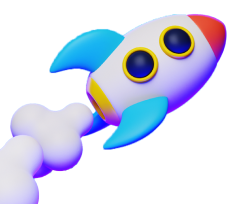
Samrat Singh & Andrei Luzan, Aug 12, 2024
Introduction
Like any other product, mobile games require marketing to attract new players. User acquisition is one aspect of mobile gaming that uses a certain set of tools and methods to market specific games to a broad audience. In simpler terms, if user acquisition is bringing in new users to play your game. Then monetization is about monetizing them.
The highly competitive market and fast pace of the mobile game development cycle make knowing how to best leverage user acquitision and monetization more important than ever. Mobile games launched now are both expertly made and offering perfect gameplay. That’s why the difference is made in their performance marketing and generating revenue. Any developer in the mobile gaming market needs to always be on the cutting edge, ready to catch the next wave of new users and be able to monetize them.
The Importance of User Acquisition and Monetization

The gaming market has seen the rise of a holistic growth model where marketing and monetization come together to create an optimized growth loop and efficient revenue spending. This model emerged from the wave of the hypercasual genre, which relies on quick, engaging gameplay to attract a broad audience. However, it has since ventured into casual and other game genres, proving its effectiveness across the spectrum.
By integrating UA and monetization strategies, developers can ensure that their games not only attract new users but also retain them, thereby maximizing lifetime value (LTV) and profitability. This synergy between UA and monetization is crucial in a market where user acquisition costs are rising, and maintaining user engagement is essential for long-term success.
Capturing that initial attention is key. So, a lot of work goes on behind the scenes with UA and their campaigns. These campaigns run for different games to ensure as many new users as possible are seeing, installing, and continuing to play these games. It plays an important role in building up a higher Lifetime Value (LTV) and helps increase the overall profitability of your game.
Working on the data and product-side in alignment with each other is central to our growth model. Hence, it is essential to synergize UA with ad monetization. This produces a workflow where:
- UA soft-launches different campaigns using various channels to gain new users
- Monet team works with key ad revenue sources to monetize users
- After testing the LTV, Monet will inform UA and devs with the necessary data
- UA uses that data to scale up the games
This flow gives birth to a loop that continually strives to support and mutually benefit from each other.

How We Synchronize User Acquisition and Monetization at TapNation
TapNation employs a multifaceted strategy to optimize user acquisition, ensuring that their games not only attract new users but also retain them. The process begins with a comprehensive soft-launch strategy, involving strategic testing and analysis of game metrics. This phase is crucial for understanding the game’s initial performance and identifying areas for improvement. By focusing on key performance indicators (KPIs) such as retention rates and playtime, TapNation fine-tunes their approach to maximize user engagement and lifetime value (LTV). This iterative process helps to ensure that when a game is fully launched, it is primed for success.
A critical component of TapNation’s UA strategy is the use of various advertising networks and channels to reach a broad audience.
Main Networks :
- Applovin
- Google Ads
- Mintegral
- Unity Ads
- IronSource
- TikTok
Many others :
- Snapchat
- Adjoe
- Tapjoy
- App Samurai
- Mistplay
- Appier
Each network is leveraged to target specific demographics and optimize ad spend. Campaigns are tailored to different objectives, including Cost Per Install (CPI), Return On Ad Spend (ROAS), and Cost Per Event (CPE). For example, CPI campaigns focus on acquiring users at a specific cost per install, while ROAS campaigns aim to generate a targeted return on ad spend within a set timeframe, ensuring that the quality of users aligns with revenue goals. We use these varied campaign types, that allow for precise targeting and efficient budget utilization. This inevitably drives higher engagement and profitability of mobile games.
Some of the main KPIs that are important to the UA are CPI, LTV, Cohorts D0, D10, and D30, LTV, ROAS and Cohorted Retention.
In addition, TapNation’s approach includes innovative retargeting campaigns to re-engage users who have previously interacted with their games but may have lapsed.
“An example of retargeting is, let’s say you have an app in your phone and you stop playing it. So networks such as Facebook and Google Ads will specifically target the people who already have the app, and they’ll start showing you these ads on different platforms so that you remember it. Once you click on the ad, you go back to the app. And that’s how we get engagement from the users,” says Samrat Singh, UA Manager at TapNation.
Utilizing networks such as Mintegral and Applovin, these campaigns specifically target existing users to bring them back to the game. This retargeting effort makes sure that valuable users are not lost and continue to contribute to the game.
“Monetization and Creatives are supposed to be the closest teams to UA. A good mobile game monetization strategy is equally important as we are completely dependent on the product and monet side in order to have higher LTV so that we can actually acquire volumes,” concludes Samrat.
How to Monetize a Mobile Game?
UA and Monetization are two sides of the same coin. So if UA is about acquiring users, then Monetization is about generating revenue or monetizing them. User acquisition is based around spending money to get more users, especially quality ones. Their campaign and strategy are built around making better investments. So user acquisition managers are the ones that are optimizing their spend, launching campaigns to optimize towards different targets. There are various creative ways to make mobile games more profitable.
“This can be a return on ad spend. So it can be ad revenue. It can be a certain action that the user takes within the game. For example, a purchase, reaching a certain level or reaching a certain event would be like event optimized campaigns,” says our Monetization Manager, Andrei Luzan.
Once we are progressing through with our UA campaigns, where we test CPI, ROAS and other internal game metrics, including retention and playtime, we move on to the LTV. This is the part where we shift from UA to monetization. Here are several key revenue sources for us. One of them is SDK integrated ad revenue.
“This is why we connect Mediation. It contains 10 or 15 networks, and there is an auction of networks trying to bid for this impression called the bidder auction. Networks. So mediation allows us to connect several ad-sources to monetize our inventory. Then there is also Waterfall which is also made for competition, but it’s like manually controlled by us,” explains Andrei.
Inevitably, our objective is to optimize it to get the highest CPM possible. To achieve this, there are also alternative ad sources like audio-ads, in-game ads, brand campaigns, direct deals, etc. Furthermore, another different revenue source is in-app purchases or IAPs. This includes in-game-packs which users buy in the game.
During these LTV tests in monet, we provide all necessary documentation and guidelines to the developers as well as the UA in order to integrate these in mediation and ad networks. We help them to set everything up and continue to scale up the mobile games. At the end of the tests if we see positive results with the LTV and the ROAS.
With Unity, DT, Bidmachine and YSO Bidding, we saw a 10% uplift due to integration of these networks.
“Overall, it’s an interconnected process between us and UA and it’s like two sides of the same coin. We have to stay in contact. So, for example, if they are adding new GEOs to their audience screen, we get new users and then we need to optimize our waterfalls on our end to make sure that we get the best possible performance from them,” adds Andrei.
Examples of Gaming Expertise

TapNation’s success is best exemplified by its portfolio of hit games. Each game is a testament to TapNation’s strategic approach and commitment to quality. For example: In one of our hit games, “Giant Rush,” you navigate a giant through a series of obstacle courses, with bonus levels and boss fights along the way. By making subtle tweaks to the game, we managed to make significant improvements to the game’s retention:
- Introducing a slow-motion animation when a player smashes through a wall boosted D1 retention by 4%.
- A new ‘special big boss’ mechanic improved D1 retention by 2% and D3 by 4%.
- Moving the gauge multiplier resulted in a 14% increase in RV watches.
Giant Rush now boasts roughly 125 million downloads and generated roughly $12 million in revenue during its first 6 months. Moreover, through our A/B testing process, we managed to boost LTV up to 100% in 30 days, which is yet another proof of the incredibly huge positive it can bring to your game.
Another notable example of TapNation’s gaming expertise is their work on “Ice Cream Inc.” By increasing spend on SDK networks by 35%, TapNation was able to significantly boost user acquisition. The game also saw improvements in LTV through the introduction of new monetization strategies, such as in-app purchases and rewarded ads.
Developer Testimonials
TapNation’s success is also evident in the testimonials from satisfied developers who have partnered with them. Here are a few quotes from developers who have experienced the TapNation advantage:
- “I would recommend you to other studios and developers for your remarkable capacity to scale ad-based games and the exceptional quality of your developer relationships..” – Nicolas Rodeghiero, Qoni Studios.
- “Back then, TapNation was a startup with just a handful of people: Herve, Anouar, Kinsey, Igor, and KML. I actually knew Kinsey from his time at Green Panda Games. When he joined TapNation, he reached out and shared a really promising motion graphic for an ice cream game. I was impressed by the potential, so I decided to take a chance and build it. That decision proved to be a great one because the rest is history!” – Redline Studios
Ready to Launch?
If you’re a game developer looking to take your game to the next level, partnering with TapNation could be the key to your success.
TapNation’s strategic approach to UA, spearheaded by our CMO, Vincent Février, leverages performance marketing, strategic testing, and data-driven campaign strategies. We strive to attract new users and also ensure that they stay engaged. We have a commitment to quality, combined with strong partnerships and a deep understanding of the gaming market. This is why our main motive is to be a valuable partner for any studio and game developer looking to succeed in today’s competitive landscape.
Learn more about TapNation and how we help developers and studios take your game to the next level!


